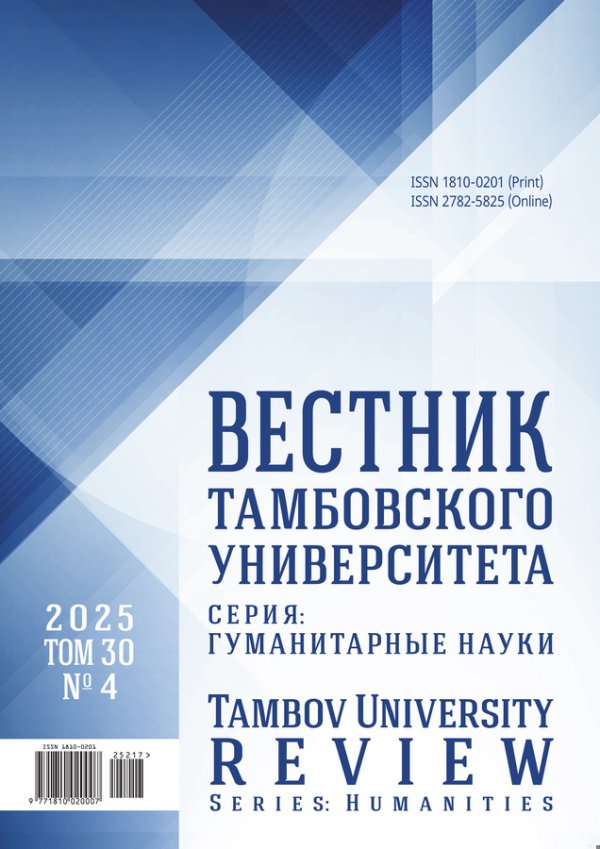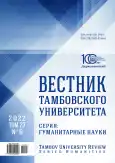Особенности и принципы разработки электронного учебного пособия
- Авторы: Болдырева В.Б.1, Бурдинский И.А.2
-
Учреждения:
- ФГБОУ ВО «Тамбовский государственный университет им. Г.Р. Державина»
- ФГКОУ ВО «Воронежский институт Министерства внутренних дел Российской Федерации»
- Выпуск: Том 27, № 6 (2022)
- Страницы: 1496-1502
- Раздел: ПЕДАГОГИКА ВЫСШЕЙ ШКОЛЫ
- URL: https://ogarev-online.ru/1810-0201/article/view/298310
- DOI: https://doi.org/10.20310/1810-0201-2022-27-6-1496-1502
- ID: 298310
Цитировать
Полный текст
Аннотация
Электронное учебное пособие – это программно-методический обучающий комплекс, предназначенный для самостоятельного изучения студентом учебного материала по определенным дисциплинам. Электронное учебное пособие – продукт, который фрагментарно или полностью может быть использован вместо учебника. Нам известно, что электронное учебное пособие – это не электронный вариант книг, где вся информация переведена из печатного варианта в электронный или есть возможность перехода из оглавления по гиперссылке на искомую главу. В зависимости от вида проведения учебного занятия, сам ход занятия должен быть соответствующим образом построен для достижения эффекта от использования такого пособия. Перед началом разработки электронного учебного пособия необходимо выделить критерии сравнения электронного учебного пособия сходной тематики для того, чтобы понять, на каком уровне сейчас находится проблематика выбранной темы. Далее, проанализировав полученные результаты и выделив для себя преимущества и недостатки уже разработанных решений, можно начать разрабатывать конкурентоспособный продукт. Выделим следующие критерии: 1) информативность (наличие подробной и доступной для понимания информации об угрозах информационной безопасности и методах борьбы с ними); 2) прозрачность интерфейса (интерфейс должен быть понятным для пользователя и гармоничным); 3) удобство навигации по электронному учебному пособию (возможность моментально переключиться на интересующий раздел, а также наличие гиперссылок); 4) интерактивность (наличие средств взаимодействия пользователя с системой); 5) регулярность обновления информации; 6) наличие поискового механизма (с целью обеспечения быстрого доступа к необходимой информации). При изучении предметов, связанных с информационными технологиями, безусловно, при грамотном применении электронное учебное пособие эффективно для самостоятельного освоения дисциплины.
Об авторах
В. Б. Болдырева
ФГБОУ ВО «Тамбовский государственный университет им. Г.Р. Державина»
Email: ver.bor.bold@mail.ru
ORCID iD: 0000-0002-8065-1545
кандидат педагогических наук, доцент, доцент кафедры профильной довузовской подготовки отделения допрофессионального образования
392000, Российская Федерация, г. Тамбов, ул. Интернациональная, 33И. А. Бурдинский
ФГКОУ ВО «Воронежский институт Министерства внутренних дел Российской Федерации»
Автор, ответственный за переписку.
Email: armor1970@yandex.ru
ORCID iD: 0000-0002-9606-9285
заместитель начальника кафедры боевой подготовки
394000,Российская Федерация, г. Воронеж, просп. Патриотов, 53Список литературы
- Ильина М.А. Электронные учебные пособия, и их важность в учебном процессе // Информационнокоммуникационные технологии в педагогическом образовании. 2012. № 3 (18). С. 102-103. https://elibrary.ru/saxhlz
- Нефедов О.В., Ивановская И.П. Сочетание традиций и инноваций при создании учебника по иностранному языку для студентов-нелингвистов // Успехи современной науки. 2016. Т. 1. № 7. С. 54-57. https://elibrary.ru/whmvah
- Николаев С.В. Информационно-методическое обеспечение образовательного процесса специалистов в области информационного противоборства // Ученые записки университета им. П.Ф. Лесгафта. 2009. № 5 (51). С. 71-77. https://elibrary.ru/kuhuzh
- Светайло Р.В. Методика проектирования и использования web-учебника в процессе обучения // Инженерно-технические решения и инновации. 2018. № 9 (18). С. 34-50. https://elibrary.ru/ylszbj
Дополнительные файлы










